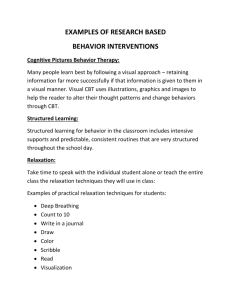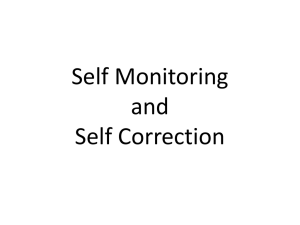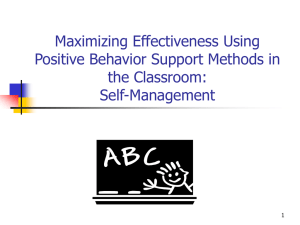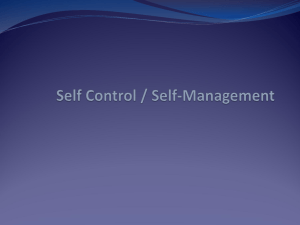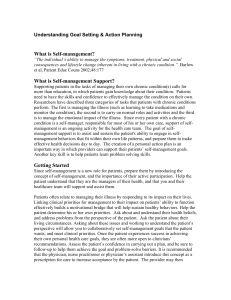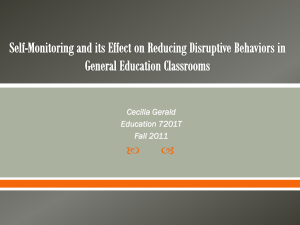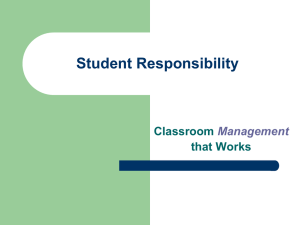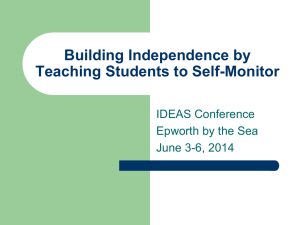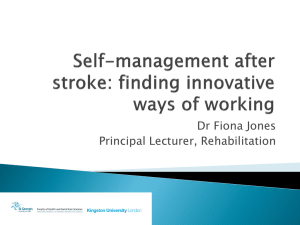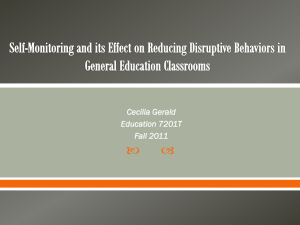Self-Management Program
advertisement
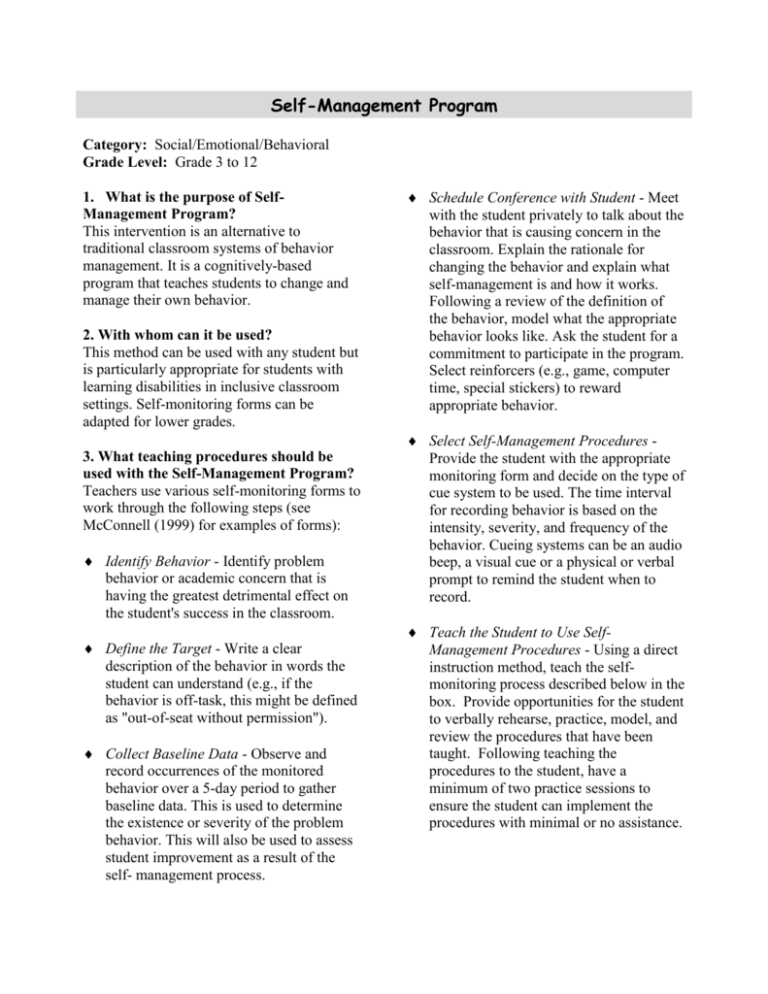
Self-Management Program Category: Social/Emotional/Behavioral Grade Level: Grade 3 to 12 1. What is the purpose of SelfManagement Program? This intervention is an alternative to traditional classroom systems of behavior management. It is a cognitively-based program that teaches students to change and manage their own behavior. 2. With whom can it be used? This method can be used with any student but is particularly appropriate for students with learning disabilities in inclusive classroom settings. Self-monitoring forms can be adapted for lower grades. 3. What teaching procedures should be used with the Self-Management Program? Teachers use various self-monitoring forms to work through the following steps (see McConnell (1999) for examples of forms): Identify Behavior - Identify problem behavior or academic concern that is having the greatest detrimental effect on the student's success in the classroom. Define the Target - Write a clear description of the behavior in words the student can understand (e.g., if the behavior is off-task, this might be defined as "out-of-seat without permission"). Collect Baseline Data - Observe and record occurrences of the monitored behavior over a 5-day period to gather baseline data. This is used to determine the existence or severity of the problem behavior. This will also be used to assess student improvement as a result of the self- management process. Schedule Conference with Student - Meet with the student privately to talk about the behavior that is causing concern in the classroom. Explain the rationale for changing the behavior and explain what self-management is and how it works. Following a review of the definition of the behavior, model what the appropriate behavior looks like. Ask the student for a commitment to participate in the program. Select reinforcers (e.g., game, computer time, special stickers) to reward appropriate behavior. Select Self-Management Procedures Provide the student with the appropriate monitoring form and decide on the type of cue system to be used. The time interval for recording behavior is based on the intensity, severity, and frequency of the behavior. Cueing systems can be an audio beep, a visual cue or a physical or verbal prompt to remind the student when to record. Teach the Student to Use SelfManagement Procedures - Using a direct instruction method, teach the selfmonitoring process described below in the box. Provide opportunities for the student to verbally rehearse, practice, model, and review the procedures that have been taught. Following teaching the procedures to the student, have a minimum of two practice sessions to ensure the student can implement the procedures with minimal or no assistance. The Monitoring Process: Student asks, "Was I on task"? Student records the answer on monitoring sheet. Student marks "O" for being off-task and "+" for being on task. Daily percentage of on-task behavior (division of "+" occurrences by total number of occurrences) can be recorded on self-graphing sheet or weekly summary sheet. Implement Self-monitoring - Provide frequent encouragement, feedback, and assistance as the student begins to use the self-monitoring procedure. Monitor Student Progress - Using a monitoring form, record observations of student behavior to determine the effectiveness of the self-management intervention. Adaptations and changes can be made as required. Conduct reliability checks to ensure the student is doing the self- management accurately. Follow-up - Check for maintenance of self-management skills. When the student demonstrates consistent success, gradually fade the self-monitoring procedure. Re-institute self-management if behavior reoccurs. 4. In What type of settings should the SelfManagement Program be used? This method of behavior management is implemented on a one-on-one basis. It can be employed by both general and special education teachers and is particularly recommended for inclusive classroom settings. 5. To what extent has research shown SelfManagement to be useful? Self-monitoring has been successfully used with students with learning disabilities to decrease inappropriate classroom behavior, increase attention to task, and increase positive classroom behaviors. It is viewed as relatively simple to implement and requires minimal supervision. It has been found to generalize to other settings and helps students become more successful and independent in class. References 1. DiGangi, S.A., Maag, J.W., & Rutherford, R.B. (1991). Self-graphing of on-task behavior: Enhancing the reactive effects of self-monitoring of on-task behavior and academic performance. Learning Disability Quarterly, 14, 221-230. 2. Hughes, C.A. & Hendrickson, J.M. (1987). Self-Monitoring with at-risk students in the regular class setting. Education and Treatment of Children,10, 225-236. 3. Kern, L., Dunlap, G., Childs, K.E. & Clark, S. (1994). Use of classwide selfmonitoring program to improve the behavior of students with emotional and behavioral disorders. Education and Treatment of Children, 17, 445-458. 4. McConnell, M.E. (1999). Selfmonitoring, cueing, recording, and managing: Teaching students to manage their own behavior. Teaching Exceptional Children, 2, 14-21. 5. Webber, J., Steersman, B., Mecca, C., & Coleman, M. (1993). Research on selfmonitoring as a behavior management technique in special education classrooms: A descriptive review. Remedial and Special Education, 14, 3856. Reviewed by: Barb Shea
